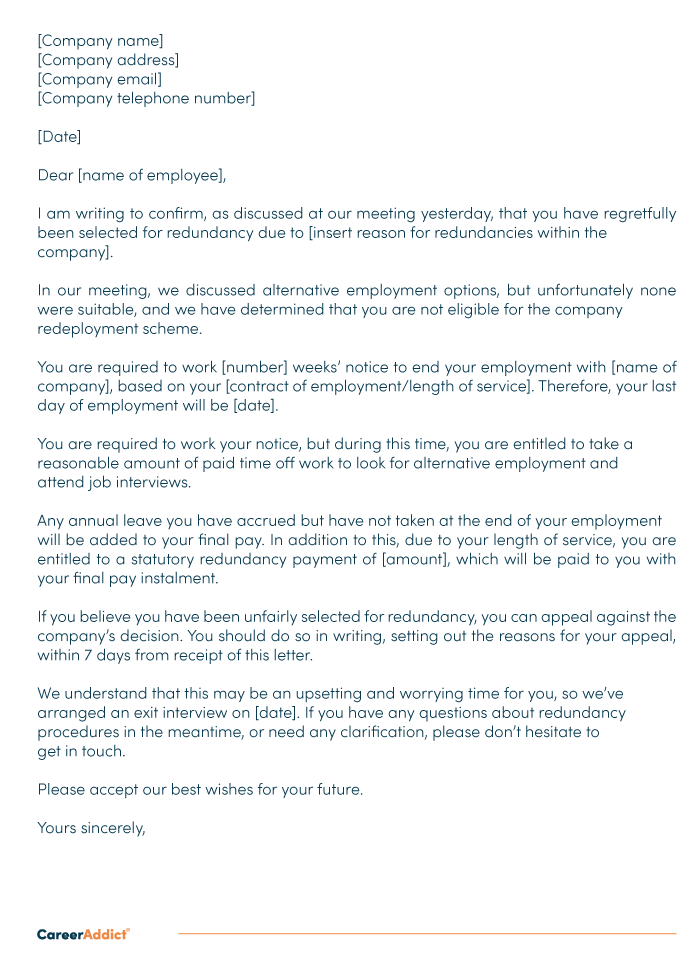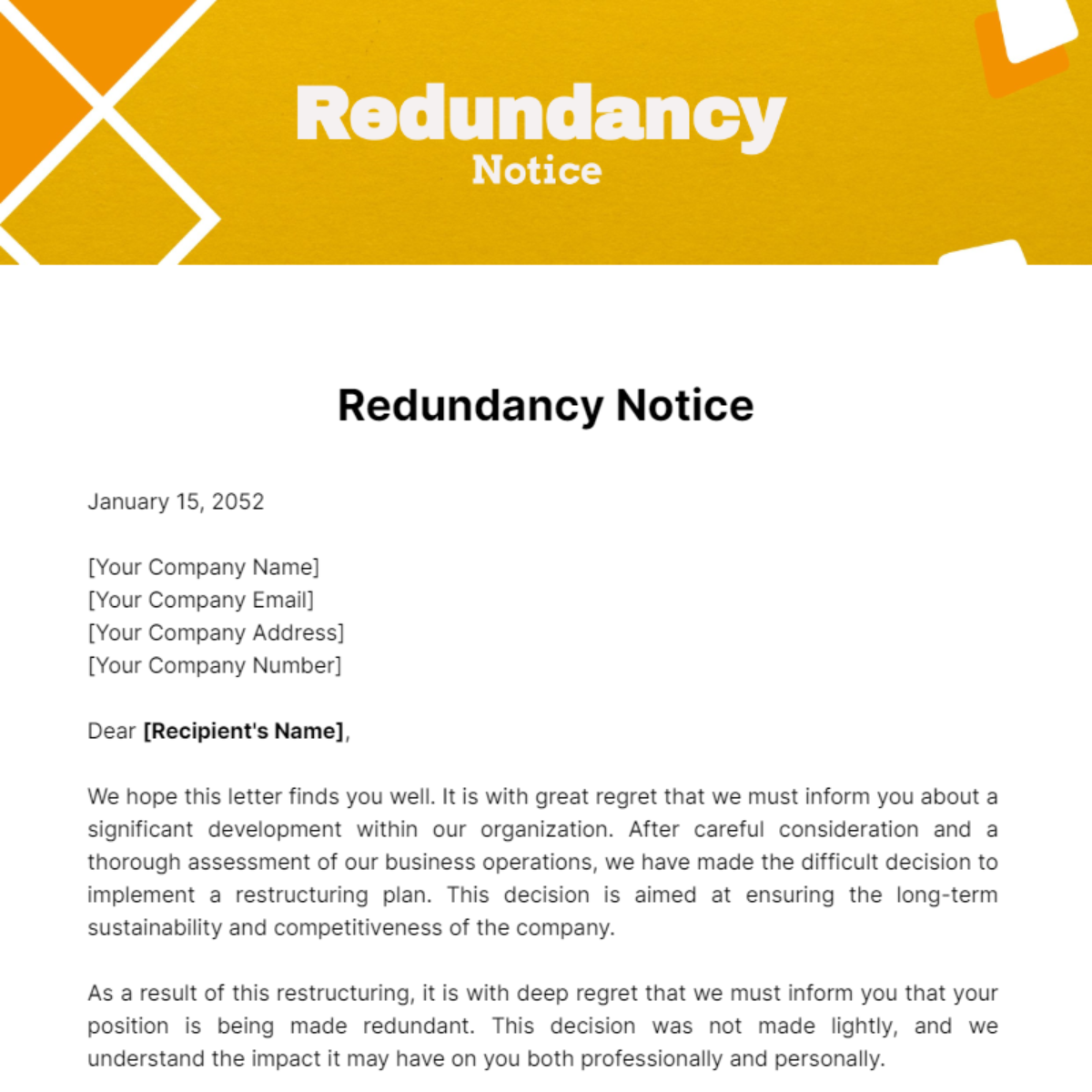Redundancy Pay If Company Goes Bust: Recognizing Your Privileges in the UK
Redundancy Pay If Company Goes Bust: Recognizing Your Privileges in the UK
Blog Article
Examining the Interplay Between Business Redundancy and Organizational Flexibility for Future Growth
In the vibrant landscape these days's organization globe, the complex connection in between firm redundancy and business flexibility becomes an important factor for continual growth and success. Companies commonly face the challenge of striking a delicate equilibrium in between keeping a level of redundancy to minimize dangers and cultivating adaptability to react swiftly to the ever-evolving market needs. This delicate interplay holds the vital to not just making it through in stormy times yet also prospering in the face of uncertainty. As we discover the complex dimensions of this interaction, appealing understandings right into exactly how organizations browse these complexities to lead the way for future growth await.
Significance of Company Redundancy
Business redundancy is a critical component that boosts business resilience and reduces functional dangers. By integrating redundancy steps within the organizational framework, firms can better stand up to unpredicted disruptions and variations in the organization environment. Redundancy acts as a critical buffer, permitting business to adapt and respond successfully to unforeseen obstacles without endangering necessary operations.
One secret facet of the value of firm redundancy is its duty in ensuring continuity during times of crisis. When encountered with unexpected adjustments or emergencies, repetitive systems, sources, or employees can step in to maintain vital functions and protect against widespread disruptions. This connection not only safeguards the firm's track record and client trust however likewise decreases financial losses and functional downtime.

Approaches for Business Adaptability

An additional essential strategy is spending in innovation and framework that can support versatility and scalability. Executing electronic devices, automation, and data analytics can streamline operations, boost efficiency, and offer important insights for educated decision-making. Furthermore, developing adaptable business frameworks that enable for quick adjustments to market characteristics and consumer requirements is vital for staying competitive in a learn this here now quickly advancing environment. By proactively determining prospective disruptions and possibilities, organizations can proactively adapt and grow in an ever-changing service landscape.
Balancing Redundancy and Flexibility
Accomplishing an unified equilibrium between functional redundancy and business adaptability is vital in browsing the complexities of a dynamic service environment. Striking the appropriate balance between redundancy and flexibility is a delicate procedure that calls for a deep understanding of the organization's goals, market characteristics, and risk tolerance.
To achieve this equilibrium, companies require to perform normal assessments of their operations to determine locations where redundancy is needed for threat mitigation and where versatility can drive advancement and growth. Carrying out adaptable frameworks, cultivating a society of continual understanding and renovation, and encouraging open communication across all degrees of the company are crucial methods to integrate redundancy and flexibility properly. By aligning these two important aspects, companies can place themselves for sustainable growth and success in an ever-changing company landscape.
Study on Adjustment Success
In analyzing instances of successful organizational adaptation, it ends up being obvious that the interaction between functional redundancy and adaptability is a specifying factor in forming resistant businesses. A DVD rental service, Netflix demonstrated amazing adaptability by transitioning into a streaming system when digitalization interfered with the industry. These case research studies underscore the value of operational redundancy paired with business versatility in fostering long-term growth and competition.
Structure Resilience for Future Growth
Structure durability for future development needs a tactical placement of operational procedures with market dynamics and arising trends. Firms should adjust to changing environments by fostering a society of flexibility, development, and continual renovation.
Additionally, fostering strong partnerships with stakeholders, such as clients, workers, distributors, and the area, is important for maintaining and weathering unpredictabilities trust and assistance throughout stormy times. Effective Read Full Article interaction and transparency play an essential duty in structure strength, as they aid line up assumptions and assist in collaboration in navigating unpredictabilities.
Additionally, organizations require to focus on discovering and growth efforts to upskill employees and outfit them with the needed tools to adjust to transforming conditions. By investing in their workforce, companies can improve their flexibility and dexterity, inevitably strengthening their durability for lasting future development.
Verdict

In the vibrant landscape of today's service imp source globe, the intricate connection in between company redundancy and organizational flexibility emerges as an important variable for sustained development and success. Firms typically encounter the obstacle of striking a delicate balance in between keeping a degree of redundancy to reduce dangers and cultivating flexibility to respond swiftly to the ever-evolving market demands.To accomplish this equilibrium, firms require to conduct regular evaluations of their procedures to recognize locations where redundancy is necessary for risk mitigation and where adaptability can drive innovation and development.In verdict, the interaction in between firm redundancy and business flexibility is crucial for future growth. Building resilience through a combination of redundancy and versatility will make sure that business are prepared for the challenges of the future.
Report this page